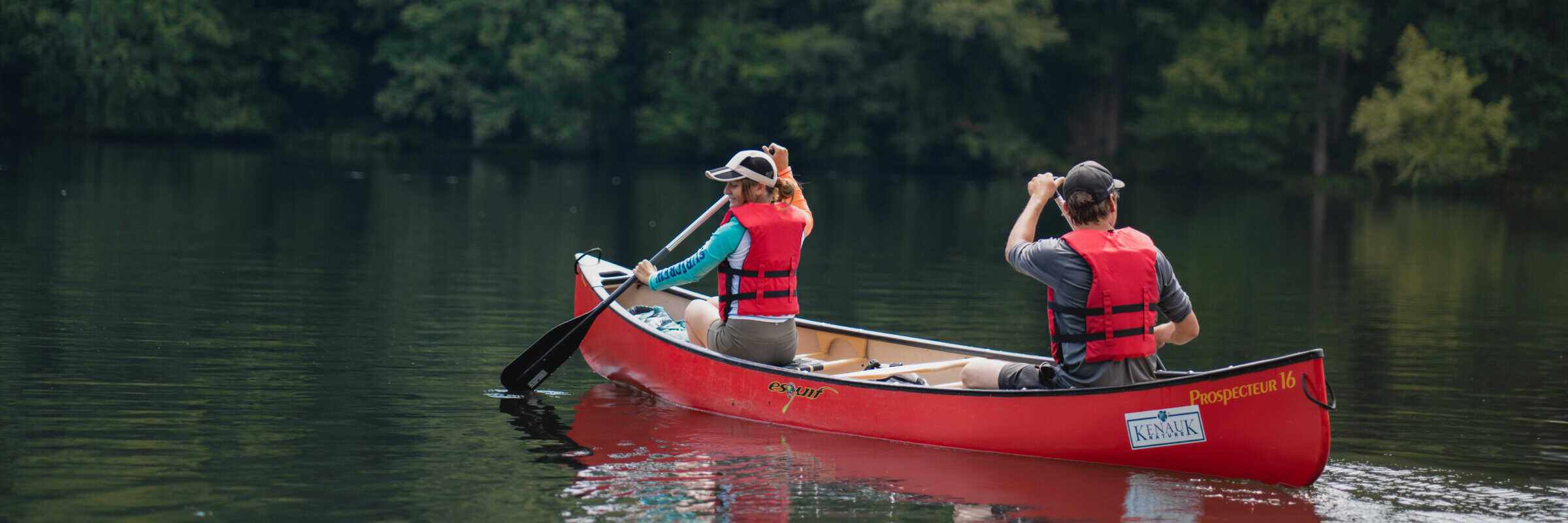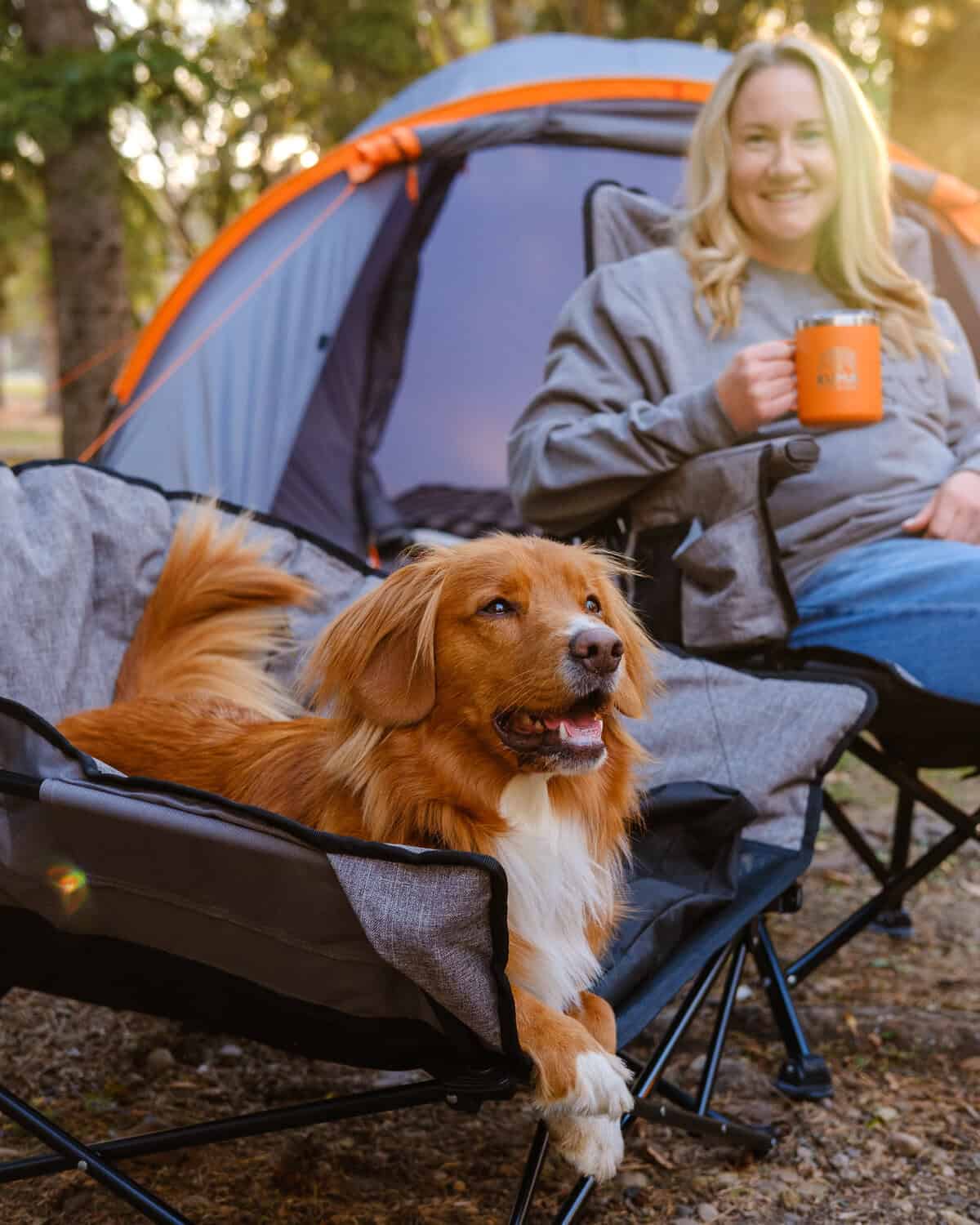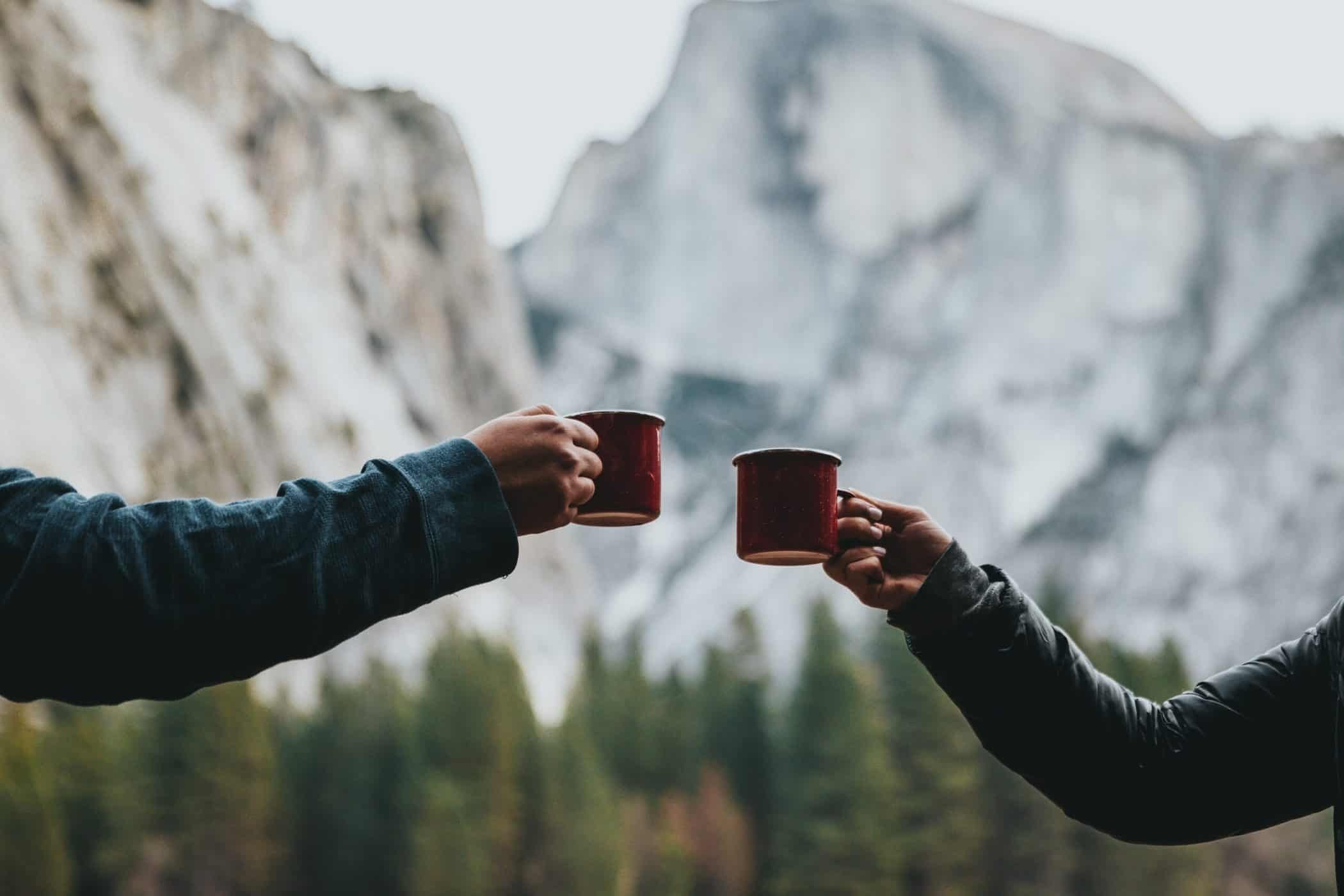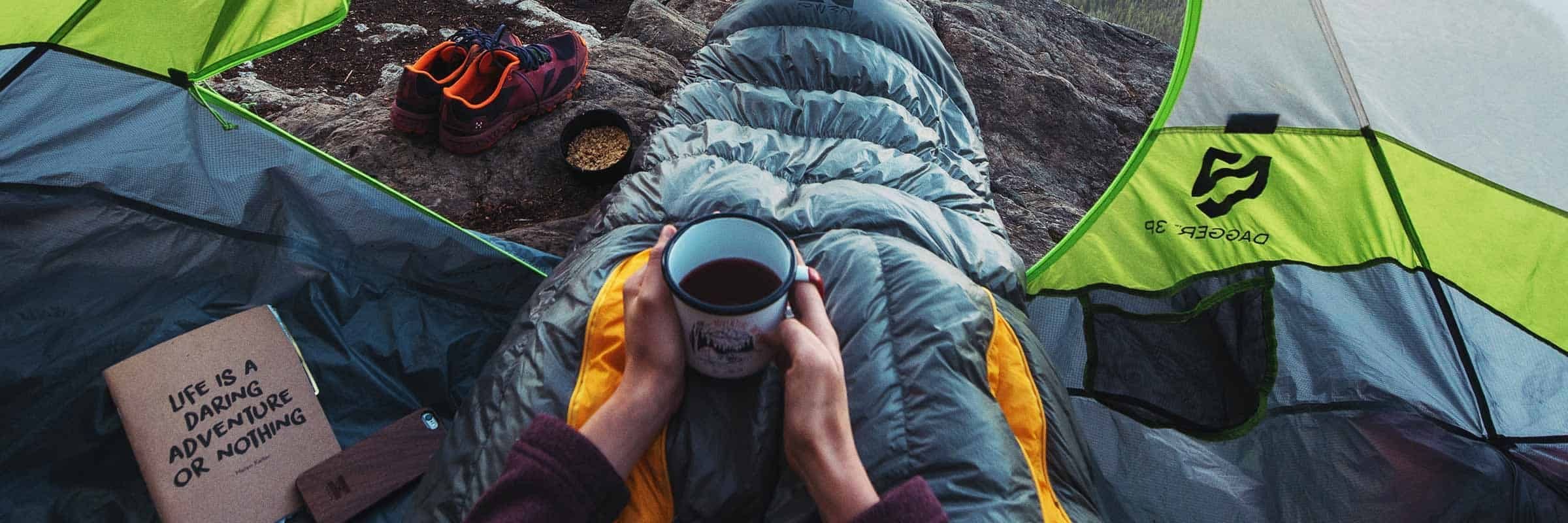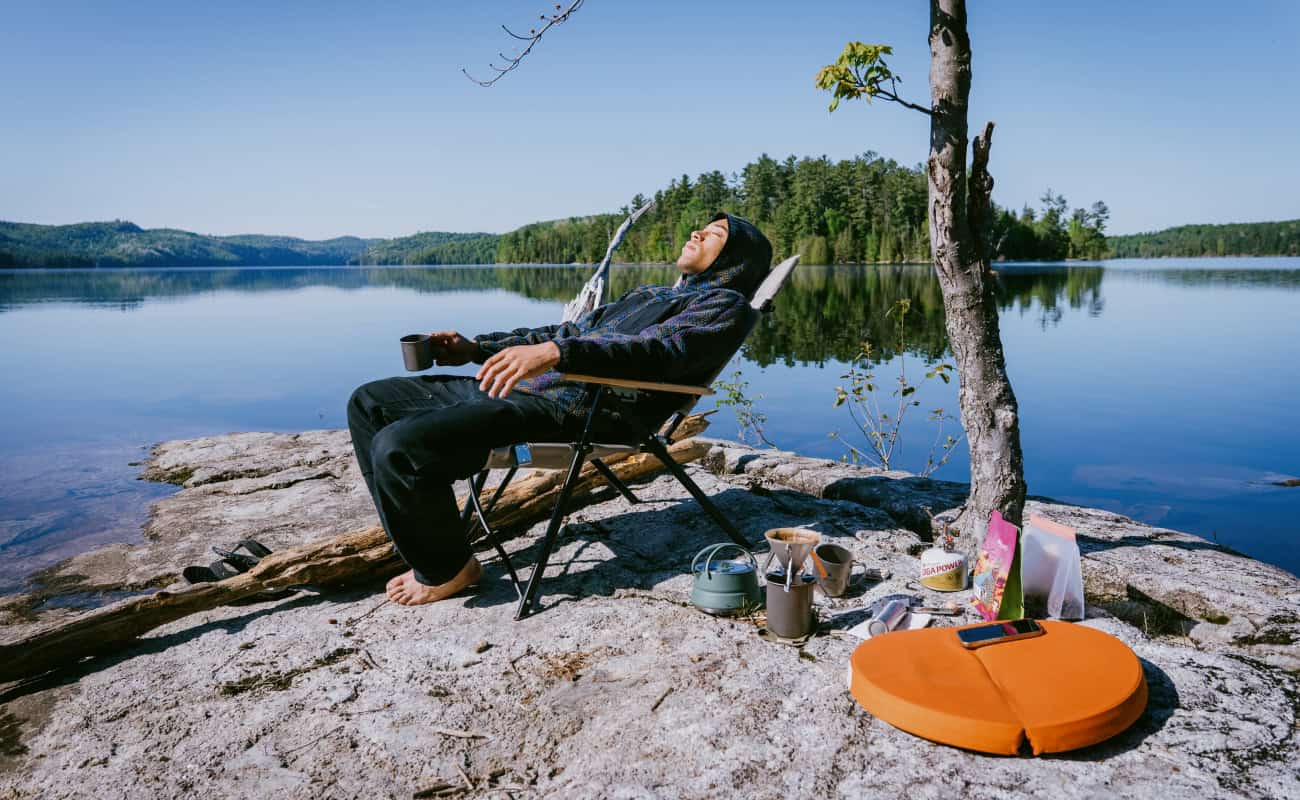Parents, take this as your rallying cry—here’s why you should pack up for a long weekend family camping trip. Despite the mess, hard work, and exhaustion that comes with wrangling small kids, there’s no better way to foster a lifelong love of the outdoors. It may not be easy or relaxing, but seeing your child embrace nature and create lasting memories is priceless. Here, we’ll cover practical tips to help you camp with confidence, from tips on what to cook and how to keep safe to a handy checklist of essential camping gear for the whole family.
Why Family Camping is Important
Why should you go camping with kids? It’s fun, for one. It’s also a great way to bond. As a parent, you get to impart your love of the outdoors while experiencing the wonder of nature through their eyes. Harmless bugs that might have been annoying before kids now offer hours of endless entertainment (and learning). Trees that may have encroached on your once peaceful scenic views are now sought after for their child-friendly climbing abilities.
While certain things about your camping experience are likely to change, the joy of camping—and the positive lessons it brings—won’t. This is your chance to instill an early love of nature. To foster a sense of adventure. To cultivate confidence, endurance, and patience through real-world skill-building. And most importantly, it creates shared memories and cherished traditions that can be passed down over generations. Years later, you won’t remember the hard work. But you will remember the first time they set up a tent. Or roasted their first marshmallow. Or stayed up late to stargaze.
The difference between a successful family camping trip and one that ends in tears? A few key tips, some good gear, and the right attitude.
Choosing the Perfect Campsite
When it comes to camping, location matters. The key is to set yourself up for success. A good campsite is one that is accessible, has amenities, and appeals to a range of ages and interests. Look for campgrounds with flush toilets and showers, along with potable water, shaded areas, picnic spots, and even playgrounds.
Many provincial and national parks in Canada offer interactive ranger programs that offer educational programming designed for young minds. Your kids may not listen to you, but they might pay attention to an enthusiastic ecologist who can teach them all about cool bugs. Think of these programs as both free childcare and a hands-on learning opportunity.
Remember, where you choose to camp is just as much your kids’ choice as yours. Involve them in the decision. Give them a list of options and let them pick. By getting them excited in the early planning phase, you can reduce their fear of the unknown and any potential last-minute meltdowns.
Keep in mind there’s no right way or place to camp. You can start in your backyard, or in a glamping tent. If you’re new to camping, go slow and keep things stress-free.
What to Look for
What should you look for in a family-friendly campsite? Family-friendly campsites typically offer:
- Flat, spacious sites for easy tent setup and room to play
- Flush toilets and showers, or clean outhouses close by
- Access to potable water for drinking and washing
- Plenty of shade and shelter for protection from sun or rain
- Quiet hours to help ensure a good night’s sleep
- Nearby trails, beaches, or playgrounds to keep kids entertained
- Laundry on-site or nearby, especially if you’re planning to stay longer than four nights
- Firewood for sale
Extra bonus points if the campground has kid-friendly educational programming, sells snacks, or hosts events like outdoor movie nights.
Family-Friendly Campgrounds in Canada
There are 37 national parks and 11 national park reserves in Canada, along with thousands of provincial campgrounds and recreation sites. We’re spoiled for choice, but don’t let the sheer number of places to camp intimidate you. Here are our picks for the best family-friendly campgrounds in Canada:
Pacific Rim National Park Reserve, British Columbia
Miles of sandy beach. Cold-water surfing. Lush, temperate rainforest. The west coast of B.C. is one giant kid-friendly playground. Its rugged yet approachable landscape is the perfect spot for little ones to roam free (within sight), splash around in the water, and explore the magic of the forest, just steps from your tent.
Camp at: Green Point Campground
Banff National Park, Alberta
Towering peaks, turquoise lakes, and wildlife around every corner—Banff’s iconic beauty never gets old, no matter your age. Families can expect to find well-marked trails, accessible campgrounds, and kid-friendly lakes.
Camp at: Two Jack Main Campground
Bruce Peninsula National Park, Ontario
Set on the shores of Georgian Bay, this Ontario gem offers crayon-blue water, great swimming, shaded forest trails, and fascinating geological formations that are sure to spark kids’ curiosity. Budding geologists (and their grownups) can spend days exploring the rocky shoreline and cool caves.
Camp at: Cyprus Lake Campground
La Mauricie National Park, Quebec
Situated halfway between Montreal and Quebec City, La Mauricie is hours from the city but feels worlds away. The park’s unique ecology includes 150 lakes—offering key habitat for animals like moose, beavers, otters, and the rare wood turtle—along with a mix of deciduous trees (perfect for leaf peeping in the fall).
Camp at: Book one of the park’s oTENTik for a semi-rustic intro to camping.
Gros Morne National Park, Newfoundland & Labrador
For kids, Gros Morne might feel like something plucked out of Jurassic Park. There are moose to spot. Glacial fjords that are laced with waterfalls. And otherworldly geological formations like the Tablelands.
Camp at: Shallow Bay Campground
Prince Edward Island National Park, PEI
Think red cliffs, rolling dunes, and some of the warmest saltwater in Canada. This coastal park is tailor-made for families, thanks to its great swimming beaches, easy biking paths, and campgrounds that are never far from an ice cream cone.
Camp at: Cavendish Campground
Essential Camping Gear
No one is happy when they are wet or cold—kids most of all. When it comes to family camping, you’ll need the basics and a few extras for those what-if scenarios. Our advice? Organize your gear for easy access. When you’re in the throes of a toddler tantrum or scraped shin situation, clear, labelled and well-organized gear makes finding that beloved stuffy or bandaid that much faster.
Here’s the family camping gear you need to keep everyone comfortable, fed, and happy outdoors:
Tents
A roomy tent is your antidote to midnight wake-ups from rogue elbows and flailing feet. Look for a four- to six-person tent with handy partitions that double as change rooms, allowing kids to change out of wet or muddy clothes without tracking in dirt.
Sleeping Gear
A good night’s sleep is key for everyone. Make sure to pack appropriately-sized sleeping bags, pillows from home, extra blankets, and a quality sleeping pad or an inflatable air mattress.
Cooking
For many families, the highlight of the weekend is camp meals. Don’t skimp on the right gear—seasonal fire bans are common, so you’ll need a backup plan for cooking those s’mores. A camp stove, cookware, utensils, and a well-insulated cooler are crucial, while accessories like a dish pan, biodegradable soap, a cloth, and food containers make cleanup easier and mealtimes smoother. Don’t forget to pack comfortable camping chairs, too.
Clothing
Look for quick-drying, comfortable mid and outer layers that can move with kids as they run, jump, and play. (Oh, and you’ll need some for yourself, too.) Weather-resistant sneakers are great for biking in unpredictable conditions, while easy pull-on boots make stomping around camp (and through mud) a breeze. For chilly nights and mornings, bring a cozy zip-up fleece.
Meal Planning
Camp meals are meant to be fun, not fussy. Vegetables are always a bonus, but don’t stress if your little one skips a few days. (Yes, they might live on hot dogs and trail mix, but the goal is to keep bellies full and moods high.) Keep in mind that food and memory are deeply linked—so while that decadent s’more might cause a sugar crash, it also becomes part of the magic they’ll remember for years.
Tips for making meal planning easy while camping? It’s all in the prep. Stick to simple meals and tackle as much chopping as you can ahead of time. Store food in clear containers organized by mealtimes.
Meal Ideas
- Breakfast: Easy-to-assemble burritos, cast iron pancakes, and cereal are easy favourites. (Parent hack: bring pre-made banana bread and grill it for an early morning treat to start off the day.)
- Lunch: Think sandwiches like PB&J, grilled cheese cooked over the fire, along with pre-made wraps and quesadillas that can be quickly heated up. (Snacks also pass here.)
- Dinner: Hot dogs, burgers, campfire nachos, and pasta are foolproof meals that are kid-approved.
- Snacks: Pack grab-and-go trail mix, fruit roll-ups, and jerky, along with a few surprise treats for when you need to coerce kids into sitting still.
- Campfire fun: S’mores, hot chocolate, roasted bananas and chocolate, and even campfire popcorn—these aren’t so much snacks as they are beloved pastimes.
Packing
Pack a mix of shelf-stable staples like granola bars, trail mix, and pasta alongside fresh produce that travels well—think apples, carrots, and bell peppers. And prep as many meals or snacks as you can ahead of time (your future self will thank you).
Fun Activities
Think activities, not distractions. Camping is a chance to get your kids involved, from helping to set up the tent to prepping meals. Plus outside, you can make virtually any task fun. Use a timer and divide your camp crew into two teams and race each other to see who finishes camp chores faster. Send your kids on a mission to collect sticks for roasting hot dogs, or have them bike to the park host operator to snag a trail map. Sure, playgrounds are fun and wi-fi tempting, but as much as possible, encourage kids to see camping—and nature—as an opportunity for imaginative play. Here are some of the best camping activities for kids:
Adventure
From biking around the campground to birdwatching, tailor outdoor adventures to your family’s ages, interests, and energy levels. Scheduled activities can help set a rhythm for the day while unstructured free time at night can allow for quiet, peaceful activities like stargazing and swapping stories around the campfire. Close to bed (or on rainy nights), tuck in and watch a pre-downloaded movie or show (bonus points if it’s about camping!) before drifting off to sleep.
Games
Check to see if your campground offers educational programming. Many have on-site games like nature bingo or scavenger hunts. Puzzles and card games are fun family-bonding activities that can be started (or stopped) at any time—ideal for fickle attention spans and early bedtimes.
Safety Tips
Camping introduces a whole new environment and set of risks. While that can feel nerve-racking for parents, it’s also rewarding to see your kid practice independence and grow in real time. To help them stay safe (and keep your nerves in check), establish a few clear ground rules.
- Stay within sight or earshot of an adult
- Don’t leave the campsite or venture off trails alone
- Always ask before going anywhere
- Wear a whistle and know how to use it if you get lost
- Never approach wildlife, no matter how curious you are
- No running near campfires or stoves
- Wear safety gear (like a bike helmet) if you’re planning to do an activity
The other crucial part of your camping kit? A first-aid kit. Outside, your kid is bound to get a few bumps, bruises, and scrapes. But, in unfamiliar places these can feel extra scary. Stash their favourite Band-Aids (along with tweezers, Polysporin, and antihistamines), and any other comfort associations they may have.
Checklist
As part of your essential safety kit, you’ll want to bring:
- A whistle (one per child)
- Saline solution and any potential cold medicine (just in case)
- Antibiotic ointments like Polysporin
- Bandages, in various sizes
- Waterproof adhesive tape and gauze
- Tweezers, for those pesky slivers
- Small scissors
- LED flashlights or headlamps (look for ones that are comfortable and well-fitting)
- Easy-to-apply sunscreen and bug spray
- Helmets and other safety gear for activities (think floaties, helmets, shin guards, and more)
Wildlife
Kids are naturally curious about animals. But when it comes to wildlife, that curiosity can also be dangerous. Camping is a great opportunity for parents to teach kids about wildlife safety. Start by talking about the kinds of animals they might see. Bring along books or games to help them identify critters both big and small. Teach them to observe from a distance (binoculars are a fun “toy” to help with this), don’t get too close, and never feed them (no matter how irresistibly cute). Encounters are rare, but it’s still important to explain what to do if one happens.
Packing Checklist
Ready to take on the long weekend with your family? Here’s your weekend camping checklist:
- Shelter & sleep: Pack a good tent, warm sleeping bags, comfy sleeping pads, and LED lighting.
- Clothing: Quick-drying, durable layers, along with weather-resistant sneakers or books. In summer, pack swimsuits, towels, sandals, and sun-safe gear.
- Camp kitchen and food: You’ll need a camp stove, cooler to store food and snacks, kid-friendly utensils, and a way to tackle dishes.
- Toiletries & health: Everything you need to (try and) keep kids clean, along with any medications, sunscreen, pediatrician-approved bug spray, and a first-aid kit.
- Kid essentials: Nature is one big playground, but for young kids, you may want to also bring along their favourite toys, books, blankets, and comfort items.



